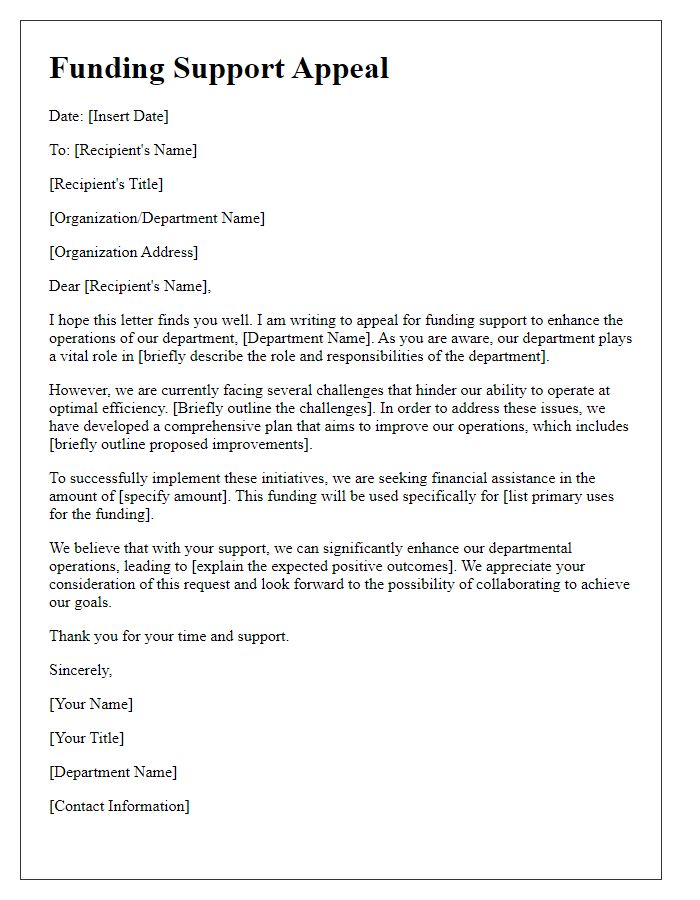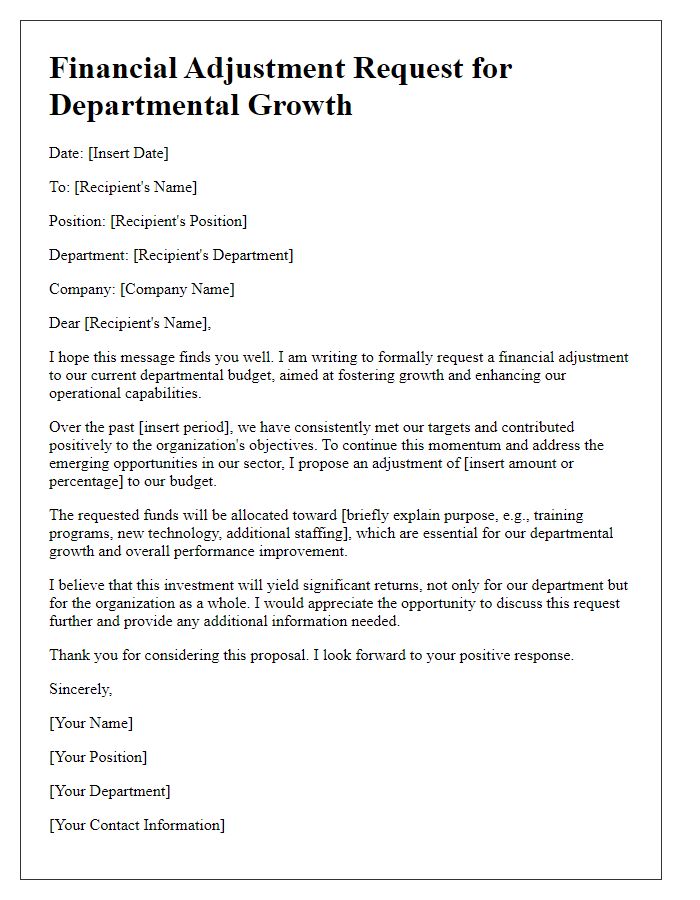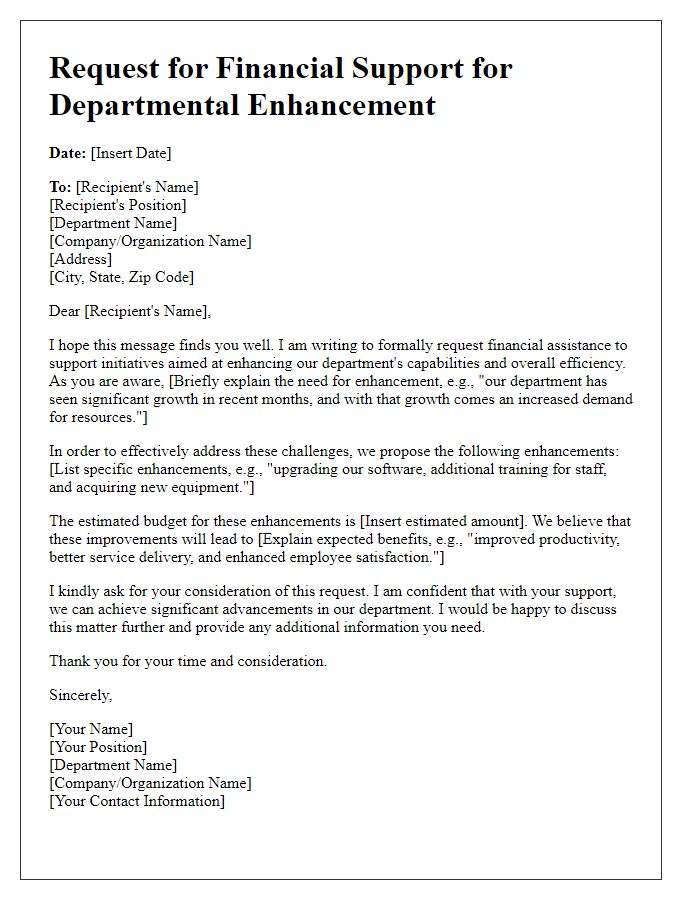Are you looking to secure a budget increase for your department? Understanding the nuances of crafting a persuasive letter can make all the difference in showcasing the value and needs of your team. In this article, we'll explore essential tips and a sample template to guide you through the process seamlessly. Ready to elevate your department's financial support? Let's dive in!

Clear justification for budget increase
A departmental budget increase request often requires explicit justification to ensure clarity and persuasiveness. Justification can include critical operational needs, such as hiring additional staff to meet growing demands, or upgrading outdated technology to enhance efficiency. Increased costs of materials or services impacting the department can also be highlighted as a reason for the increase. For example, a 15% rise in vendor prices for essential supplies may significantly strain the current budget. Additionally, unexpected projects or initiatives, like expanding community outreach programs or implementing new software solutions, can necessitate additional funds. Providing data-backed forecasts, historical budget performance, and alignment with organizational goals will further strengthen the request.
Alignment with departmental goals
Strategic alignment with departmental goals necessitates a comprehensive budget increase request, aimed at enhancing resources and operational capabilities. The department, focused on delivering exceptional service to stakeholders, aims to allocate additional funds towards key initiatives such as staff training programs, technology upgrades, and infrastructure improvements. Increased funding will directly support the objectives outlined in the departmental strategic plan, which includes enhancing efficiency by 20% and improving customer satisfaction scores by 15% within the next fiscal year. Successful execution of these initiatives relies heavily on a budgetary boost, ensuring alignment with the overarching mission of the organization while fostering a culture of continuous development and excellence.
Demonstrated return on investment
Departmental budget increases directly impact operational efficiency and profitability. For instance, an investment of $50,000 in new software tools can lead to improved productivity, resulting in an estimated annual revenue increase of $200,000. Additionally, enhanced training programs costing $30,000 may facilitate employee skill development, reducing turnover rates by 15%, thereby saving approximately $75,000 in recruitment costs. Such financial metrics underscore the value of budget allocation, illustrating a clear return on investment that supports business growth. Regular monitoring of financial outcomes can further validate the effectiveness of these expenditures, ensuring alignment with organizational goals.
Detailed breakdown of needed resources
The departmental budget increase request outlines the critical resources needed for enhanced operational efficiency. Personnel costs, accounting for approximately 45% of the total budget, encompass salaries for additional staff required to manage growing workloads in the Human Resources division. Operational expenses, projected to rise by 25%, include essential software licenses for project management tools such as Asana, impacting overall productivity positively. Equipment costs, estimated at $15,000, will procure state-of-the-art computers and ergonomic furniture for employee well-being. Training and development allocations, anticipated to increase by 30%, will fund seminars and workshops aimed at skill enhancement for 50 employees, addressing the evolving industry standards. This comprehensive breakdown highlights strategic investments essential for achieving departmental objectives and improving service delivery.
Support from key stakeholders
Key stakeholders play a critical role in advocating for a departmental budget increase, as their support can significantly influence decision-making processes within organizations. Engaging individuals such as department heads, financial officers, and organizational leaders can create a solid foundation for presenting the budget increase request. Highlighting the impact of the current budget constraints, including limitations on resources and personnel, bolsters the case. Demonstrating how additional funds can enhance productivity, improve service delivery, or support strategic initiatives can further strengthen the appeal. Collecting data and testimonials from team members about the challenges faced due to underfunding adds a personal touch. Presenting this information during budget meetings, especially to key decision-makers like the Chief Financial Officer or the Board of Directors, is essential for ensuring that the request is heard and considered.
Letter Template For Departmental Budget Increase Request Samples
Letter template of budget allocation enhancement request for the department.

Letter template of financial resources increase proposal for departmental needs.

Letter template of funding support appeal for improved departmental operations.

Letter template of financial adjustment request for departmental growth.

Letter template of budget revision appeal for enhanced departmental services.

Letter template of expenditure increase justification for departmental projects.

Letter template of resource requisition for departmental development initiatives.

Letter template of financial support request for departmental enhancement.






Comments